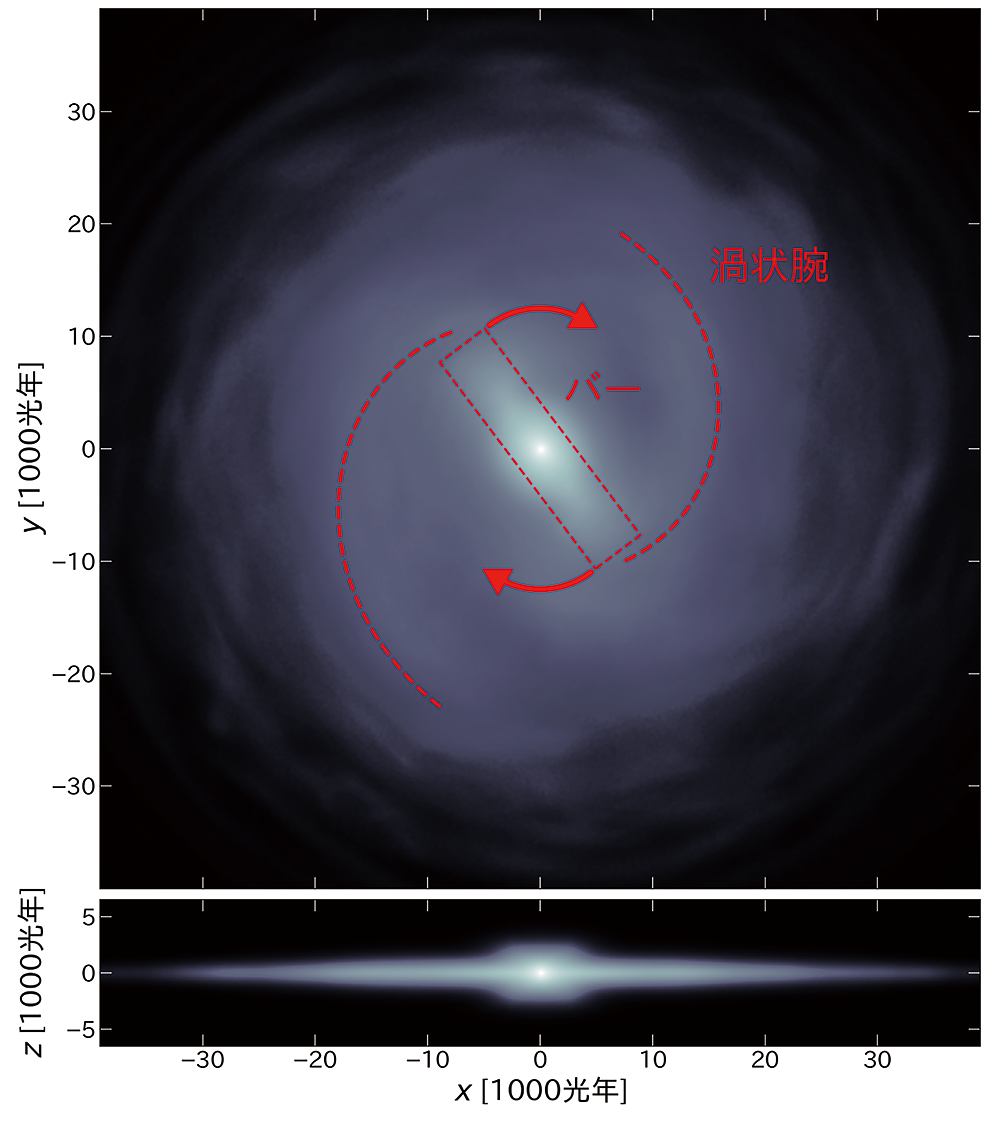Disclaimer: machine translated by DeepL which may contain errors.
~ A message from a graduate student~.
"Milky Way Galaxy" in the computer
 |
| Tetsuro Asano |
| Department of Astronomy, 1st Year Doctoral Student |
| Birthplace Nagasaki Prefecture |
| High School Sasebokita High School |
| Faculty Tohoku University, Faculty of Science |
The Milky Way shining in the night sky is the Milky Way Galaxy (our Milky Way Galaxy) seen from the viewpoint of the solar system, but what does it look like from outside the galaxy? Based on various observations to date, the Milky Way is considered to be a disk galaxy (barred spiral galaxy) with a barred structure (bar) and spiral arms. However, the details of the Milky Way's overall picture are not yet clear because we, as observers, are located in the Milky Way Galaxy's interior and have a limited range of observation capability. I have been interested in the dynamical structure and evolution of the Milky Way galaxy, particularly focusing on the effects of the bar and spiral arms on the motion of the stars that make up the galaxy.

The Milky Way galaxy as created by an N-body simulation.
Top: A frontal view of the galaxy.
Bottom: Side view of the galaxy. Created from data in M S Fujii et al. Monthly Notices of the Royal Astronomical Society 482, 1983 (2019), analyzed by the author.
It is very difficult to directly observe the orbital motion of stars and changes in the structure of the galaxy itself. The dynamical timescale of galaxies is extremely long compared to the history of mankind, and we can only observe galaxies in a static manner. One way to overcome this difficulty is to use numerical simulations. I use a method called N-body simulation, which represents a galaxy as a collection of many particles and calculates the orbits of individual particles and the dynamical evolution of the galaxy as a whole while evaluating the gravitational forces acting between the particles. Figure shows an example of an N-body simulation of the Milky Way Galaxy. In my previous studies, I have analyzed simulation data to investigate the motion of stars. Most of the stars in the galactic disk are moving in a circular motion around the galactic center, but some of them have special orbits called resonance orbits. These orbits are created by the effect of the rotating bar. Stars with resonant orbits have a different motion than stars in general disks, and thus form a population of stars with a special velocity distribution. In fact, something similar to this has been observed in stars in the neighborhood of the solar system and is called the velocity-space sub-structure. By comparing the simulation data with the Gaia satellite data, I have shown that there is a high probability that the actually observed velocity-space sub-structure is also created in the resonant orbit of the bar. Furthermore, using the conditions required for resonant orbits to be seen in the vicinity of the solar system, the rotational velocity of the bar, which is difficult to observe directly, could be estimated indirectly.
This field of study, called galactic dynamics, is a relatively old field in astronomy. I find it fascinating that even in a field that has been studied for many years, new discoveries can be made through the latest observations and large-scale simulations. I believe that we will continue to gain a deeper understanding of the structure and evolutionary history of the Milky Way Galaxy by using simulations to decipher Gaia's observational data.


